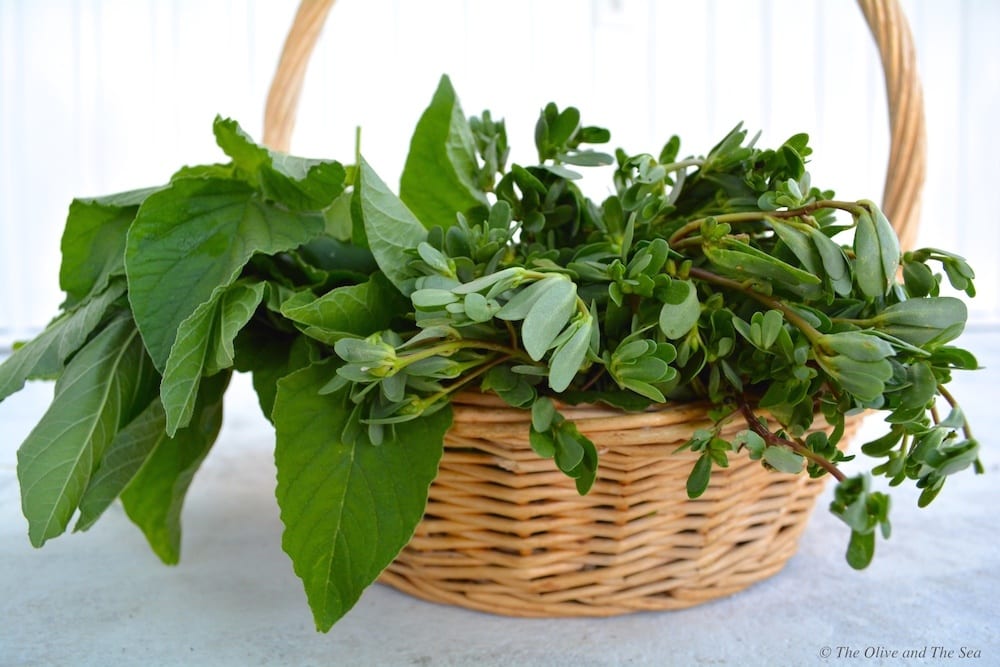Green Amaranth and Purslane

A majority of the ingredients used in Greek cuisine are the standard foods that most of us keep in the pantry and refrigerator. Onion, flour, oregano, cinnamon, salt, potatoes, all of these are common fare. However, occasionally, during my trips to Greece, I come across ingredients that have little to no presence in the United States.
Two such ingredients are green amaranth, known as “vlita” in Greek, and purslane, or “glystrida”. The reason I chose to write about these two plants together is that both are considered weeds. Having grown up in Switzerland, I am familiar with the notion that certain weeds are edible and in some cases considered a delicacy. During my childhood, it wasn’t uncommon to see people on a Sunday afternoon strolling through the fields behind our home, filling bags with dandelion greens from which they would prepare salads. You can imagine my amusement when walking through home improvement stores years later and noticing that this same plant was the one chosen to grace the front of weed killer sprays.
In Greek cooking, green amaranth leaves and stems are boiled in salt water and served with olive oil and fresh lemon juice. These leaves contain vitamin A and C, folate, thiamine, niacin, riboflavin, calcium, iron, potassium, zinc, copper, and manganese. Purslane leaves are added raw to salads and contain omega-3 fatty acids, vitamin A, C, and E, as well as magnesium, calcium, potassium, and iron.
